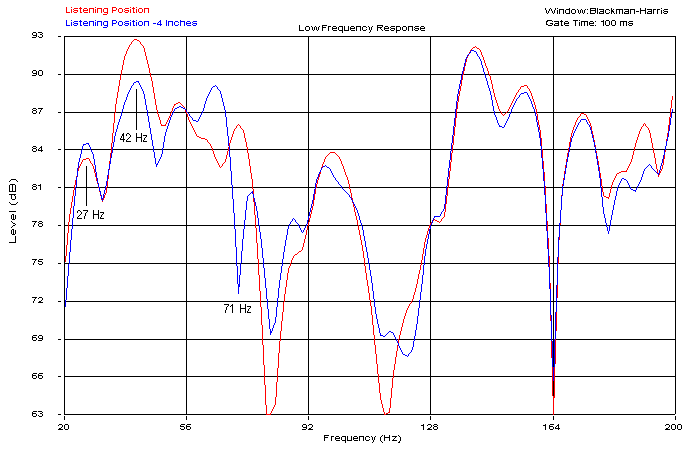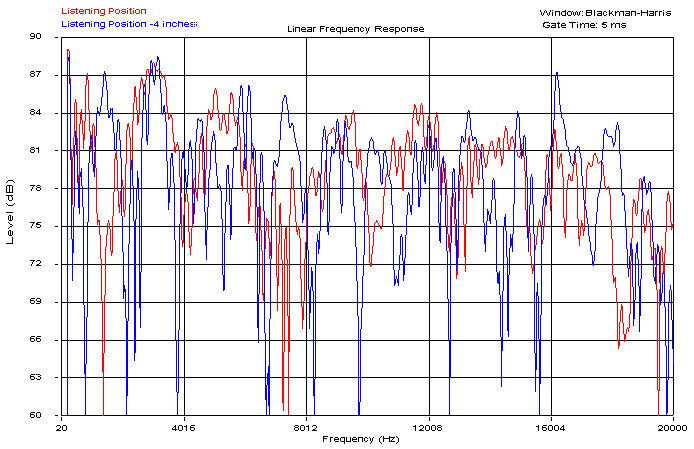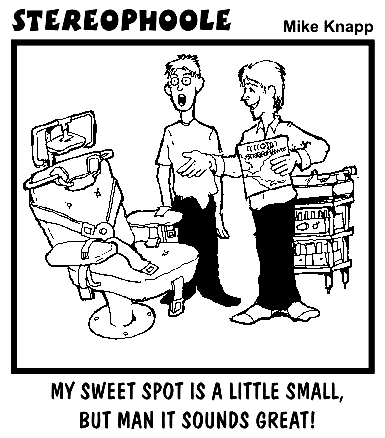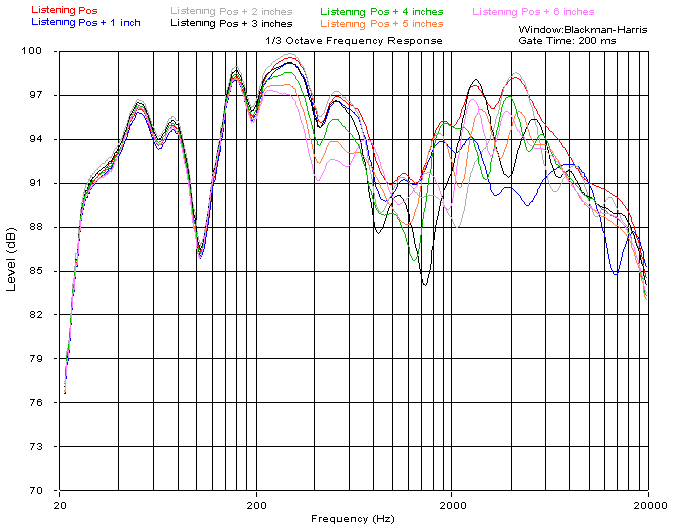
| www.ethanwiner.com - since 1997 |
Why We Believe
A common-sense explanation of audiophile beliefs.
by Ethan Winer
Audio is a science, and most aspects of the science of audio have been understood fully for 50 years or more. Yet audiophiles sometimes report being able to hear things that defy what is known about the perception of sound. For example, some people claim to hear a difference between speaker cables even when both cables have very similar resistance and other properties. When pressed, they often say they believe they can hear things that science has not yet learned how to measure. Is this really possible? Modern audio test equipment is capable of measuring everything known to affect sound quality over a range exceeding 120 dB, yet nobody I know of can hear artifacts even 80 dB below the music while it is playing. In my experience, the top 20 to 30 dB matters the most.
Certainly some of these reports can be attributed to the placebo effect and expectation bias. For example, if you know that a $4 cable has been replaced with a cable costing $1,000, it's not unreasonable to expect the sound to improve with the more expensive brand. Likewise with any other expensive audio component. After all, how could a $15,000 power amplifier not sound better than one costing only $150? Yet tests have shown repeatedly that most modern gear has a frequency response that's acceptably flat (within a fraction of a dB) over the entire audible range, with noise, distortion, and all other artifacts well below the known threshold of audibility. (This excludes products based on lossy compression such as MP3 players and satellite radio receivers, as well as products such as preamps that add intentional color using tubes and transformers.)
So what else could account for these perceived differences?
COMB FILTERING IS THE ROOT OF ALL EVIL
Through my research in room acoustics I believe the acoustic phenomena known as comb filtering is the most plausible explanation for many of the differences people claim to hear from cables, power conditioners, isolation devices, low-jitter external clocks, polarity reversal, ultra-high sample rates, replacement power cords and fuses, and so forth. Comb filtering is a specific type of frequency response error that occurs when direct sound from the loudspeakers combines in the air with reflections off the walls, floor, ceiling, and other nearby objects.
While testing acoustic treatment I had occasion to measure the frequency response in an untreated room at very high resolution. This room is typical of the size you'll find in many homes - about 16 by 11-1/2 by 8 feet high. The loudspeakers used were Mackie HR824 bi-amplified active monitors and a Carver Sunfire subwoofer. The frequency response measurements were made using the ETF software with a precision Earthworks microphone.
Besides measuring the response at the listening position, I also measured at a location four inches away. This is less distance than the space between most adult's ears. At the time I was testing bass traps so I considered only the low frequency response, which showed a surprising change for such a small span.
 |
| Figure 1: This graph shows the low frequency response in a room about 16 by 11-1/2 by 8 feet high at two locations four inches apart. Even over such a small physical span the response changes substantially at many frequencies. |
Conventional wisdom holds that the bass response in a room cannot change much over small distances because the wavelengths are very long. (A 40 Hz sound wave is longer than 28 feet.) Yet you can see in Figure 1 above that the peak at 42 Hz varies by 3 dB for these two nearby locations, and there's still a 1 dB difference even as low as 27 Hz. The reason the frequency response changes so much even at low frequencies is because many reflections, each having different time and phase delays, combine in different amounts at every point in the room. In small rooms the reflections are strong because the reflecting boundaries are all nearby, so that further increases the contribution from each reflection. Also, nulls tend to occupy a relatively narrow physical space, which is why the nulls on either side of the 92 Hz marker have very different depths. Indeed, the null at 71 Hz in one location becomes a peak at the other.
More recently I examined the same data over the entire audible range, and that graph is shown below in Figure 2. The two responses are so totally different you'd never guess this is even the same room and loudspeakers!
 |
| Figure 2: The graph above shows the full range response from the same two measurements in Figure 1. At higher frequencies the response difference four inches apart is even more substantial than below 200 Hz. |
The cause of these large response differences is comb filtering. Peaks and deep nulls occur at predictable quarter-wavelength distances, and at higher frequencies it takes very little distance to go from a peak to a null. For example, at 7 KHz a quarter wavelength is less than half an inch! At these higher frequencies, reflections from a nearby coffee table or even a leather seat back can be significant.
Because of comb filtering, moving even a tiny distance changes the response by a very large amount at mid and high frequencies. Especially in small rooms having no acoustic treatment at the first reflection points. The response at any given cubic inch location in a room is the sum of the direct sound from the speakers plus many competing reflections arriving from many different directions. So unless you strap yourself into a chair and clamp your head in a vise, there's no way the sound will not change dramatically when you move even one inch.
Even with first reflection treatment in place, loudspeaker beaming / lobing also contributes to the frequency response changing with position. One goal with speaker design is to have a flat response not only directly in front of the speaker, but also off-axis. But it's impossible to achieve the exact same response at all angles, so that's another factor.
 We don't usually notice these changes when moving around because each ear
receives a different response, so what we perceive is more of an average. A peak or deep
null in one ear is likely not present in the other ear, and vice versa. And since all
rooms have this property, we're accustomed to hearing these changes and don't even notice
them. However, the change in response over distance is very real, and it's definitely
audible if you listen carefully. If you cover one ear it's even easier to notice because
then the frequencies missing in one ear are not present in the other ear.
We don't usually notice these changes when moving around because each ear
receives a different response, so what we perceive is more of an average. A peak or deep
null in one ear is likely not present in the other ear, and vice versa. And since all
rooms have this property, we're accustomed to hearing these changes and don't even notice
them. However, the change in response over distance is very real, and it's definitely
audible if you listen carefully. If you cover one ear it's even easier to notice because
then the frequencies missing in one ear are not present in the other ear.
I am convinced that comb filtering is at the root of people reporting a change in the sound of cables and electronics even when no significant change is likely. If someone listens to their system using one pair of cables, then gets up and switches cables and sits down again, the frequency response heard is sure to be very different because it's impossible to sit down again in exactly the same place. So the sound really did change, but probably not because the cables sound different!
With audio and music, some frequencies are rather harsh sounding, such as the range around 2 to 3 KHz. Other frequencies are more full sounding (50 to 200 Hz), and yet others have a pleasant "open" quality (above 5 KHz). So if you listen in a location that happens to favor harsh sounding frequencies, then change a cable and listen again in a place that suppresses that harshness, it's not unreasonable to believe the cable is responsible for the difference. Likewise, exchanging a power amplifier might seem to have affected the fullness of the music even though the change in low frequency response was really due to positioning.
Large variations in frequency response can also occur even in rooms that are well treated acoustically, though having bass traps greatly reduces the change at low frequencies. Figure 3 below shows the response I measured at seven locations one inch apart. These measurements were made in my rather large, well-treated home recording studio, not the same room as the graphs in Figures 1 and 2 above.
Since this graph shows seven curves at once, I used third octave averaging to show each response more clearly. Without averaging there is too much detail, making it difficult to see the "forest for the trees" so to speak. Besides a fair amount of bass trapping, the listening position in this room where the measurements were taken is mostly "reflection free," so variations in the response at higher frequencies are due mainly to things other than reflections from nearby boundaries. I verified this by looking at the impulse response - the two main reflections at 1 ms and 6 ms were down by about 14 and 16 dB respectively.
 |
| Figure 3: This graph shows the full range response at seven locations one inch apart in a large room well-treated with broadband absorption and bass traps. With bass traps the response at low frequencies varies much less, but the mid and high frequencies still change drastically over very small distances. |
Since the listening position has little reflected energy, one likely cause of the differences is loudspeaker beaming, which alters the response at different angles in front of the speaker drivers. Another is comb filtering due to the different arrival times from the left and right speakers. The test signal was played through both speakers at the same time, and the measuring microphone was moved in one-inch increments from the center toward the right. As the microphone was moved to the right, sound from the right speaker arrived earlier and earlier compared to the left speaker, and that also causes comb filtering. So even in a well treated room the response at higher frequencies can vary a large amount over very small distances. This further confirms that comb filtering is the main culprit, even when someone has extensive room treatment.
It's clear that bass traps make the low frequency response much more consistent across small distances. You can't see that here specifically because the low frequencies are also averaged in third octaves, which lowers the display resolution. But when I compared the seven responses below 200 Hz at high-resolution they were similar to the third octave averaged graphs, so I didn't bother to make a separate graph just for the bass range as I did for the room in Figure 1.
OTHER CONSIDERATIONS
There are other reasons people might think they hear the sound change even when no change is likely. One is the limit of auditory memory - if it takes 15 minutes to swap a set of speaker cables, it will be more difficult to recall the original sound when compared to switching quickly between two different sources. Crawling around on the floor will also likely raise your blood pressure, which can affect perception. We also hear differently early in the day versus later when we're tired, and just listening for a while can change our perception. Does that solid state amp really sound different after warming up for half an hour, or is it just our perception that changed? Add a couple of cocktails to the mix and then you really can't tell for sure what you're hearing!
Some people seem to prefer the sound of certain artifacts such as small amounts of harmonic and IM distortion. Preferring the sound of a device that is not audibly transparent is not the same as imagining a change when one doesn't exist, but it's not unrelated. This may be why some people prefer the sound of vinyl records and tube equipment. Everyone agrees that vinyl and tubes sound different from CDs and solid state gear. It's also very easy to measure the artifacts that are added. So then the question is why do some people prefer the types of artifacts that are added, and consider their presence an improvement in sound quality?
In THIS article for Sound On Sound magazine I wrote about the positive effects of adding subtle distortion intentionally to a recording. In that article I wrote:
| Years ago I did a mix in my DAW [Digital Audio Workstation] and made a cassette copy for a friend. I noticed the cassette sounded better - more "cohesive" for lack of a better word - and I liked the effect. A few times I even copied a cassette back into the computer, used a noise reducer program to remove the hiss, then put the result onto a CD. I knew it was an effect, not higher fidelity or the superiority of analog tape, but I had to admit I liked the effect. |
Over the years I have seen many "religious" arguments in newsgroups and web forums. The science-minded objectivists assert that everything can be measured, and things like replacement AC wall outlets cannot possibly affect the sound no matter what the subjectivist "tweakers" claim. The subjectivists argue back they are certain they can hear a difference and the objectivists are simply measuring the wrong things.
It now appears that both sides have been right all along! Some things really are too insignificant to change the sound audibly, but often the wrong things have been measured too. The room you listen in has far more influence on what you hear than any device in the signal path, including even the loudspeakers in most cases. It makes perfect sense that the one thing neither camp has ever considered - acoustic comb filtering - turns out to be the real culprit.
![]() Ethan
Winer has been a professional audio engineer for nearly 40 years. He now heads up RealTraps where he designs acoustic
treatment products for recording studios, listening rooms, and home theaters.
Ethan
Winer has been a professional audio engineer for nearly 40 years. He now heads up RealTraps where he designs acoustic
treatment products for recording studios, listening rooms, and home theaters.
Entire contents of this web site Copyright © 1997- by Ethan Winer. All rights reserved.